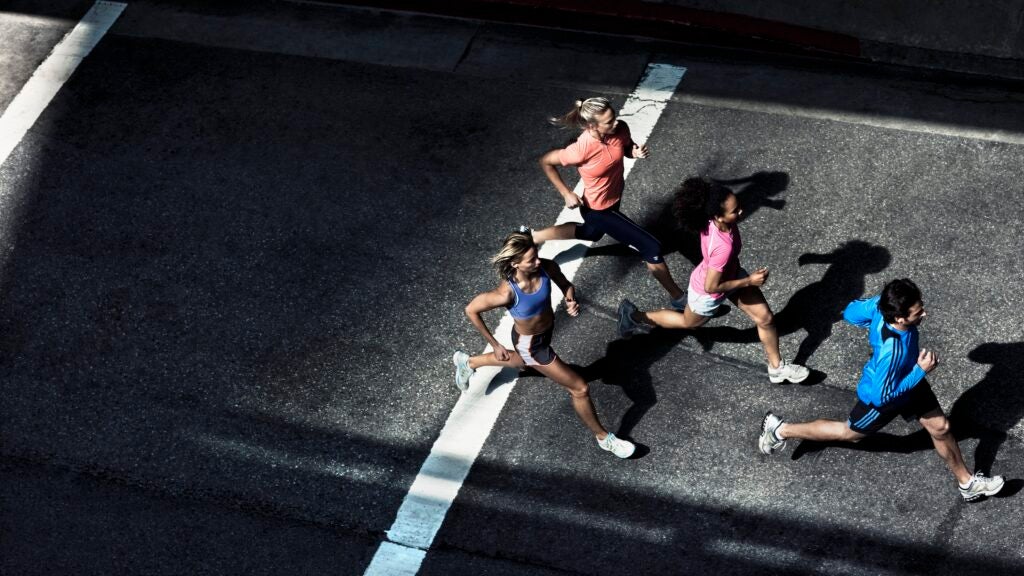
Earlier this summer, the Running Industry Diversity Coalition (RIDC) launched its #FreedomToRun campaign for Juneteenth, June 19, by releasing a series of three studies on racial representation in industry employment and running participation. These studies were produced in partnership with Bentley University, providing in-depth analyses and first-of-its-kind research to establish a baseline measure for progress toward racial justice.
The three studies were titled “The Future of Running: Connecting with the Next Generation of Racially Diverse Runners,” “Racial Diversity and the Business of Running: Mapping a Path to Equitable Employment, Leadership, and Ownership,” and “Racial Diversity in Trail Running: Understanding the Underrepresented Experience.” The studies were funded by Altra, Brooks, New Balance, On, Patagonia, Salomon, Saucony, Smartwool, and Strava.
While RIDC previewed these findings earlier this year with industry partners in race management, events, retail, and brands, according to RIDC executive director Kiera Smalls, it has also made a concerted effort to share with key brands and organizations not partnered with the coalition, in an effort to get them to assess their internal policies and practices.
What Is the RIDC?
RIDC is a 501(c)3 nonprofit that was established in October 2020, at the height of the COVID-19 pandemic and in the wake of the tragic deaths of Ahmaud Arbery, George Floyd, and Breonna Taylor, which sparked a social justice reckoning across nearly every industry, including the running space. The organization was founded by a small group of running industry leaders that came together to form the RIDC, including co-chairs Chris Lampen-Crowell and Alison Mariella Désir, with the goal of increasing employment opportunities and running participation among Black, Indigenous, and People of Color (BIPOC) in the U.S. by establishing transparency and measuring accountability among organizations.
That’s where this research came in, says Erin Flynn, a professor of marketing at Bentley University and a lead researcher on the studies who has also been involved with RIDC since its inception. In 2020, Flynn asked Lampen-Crowell if his team had data on where the industry currently stood, knowing she’d be surprised if anyone had actually ever studied this. When he said they did not, she volunteered to help with the research, which would be critical for pursuing the organization’s mission.
“Without that, you’re holding subjective conversations,” Flynn says. “People are well-intentioned. They might think they’re making progress and talking about it more, but without the data, we can’t really know if we’re actually making true change.”
According to data from the Sports and Fitness Industry Association (SFIA), approximately 34 percent of runners (16 million people) in the U.S. are people of color, which highlights why it’s imperative for key players in the industry to address issues related to systemic racism and a lack of inclusivity, especially as the U.S. population is growing increasingly more racially diverse, with people of color projected to be the majority by 2045.
Large running events in particular, including all three U.S.-based World Marathon Majors, are still lagging when it comes to tracking racial demographic information among its participants, which has undoubtedly contributed to setbacks in progress, Smalls says.
“Gender data has become standard practice, and it is necessary to recognize that race and ethnicity are essential for diversity, equity, and inclusion progress, too,” she says. “We need event organizers to better understand the makeup of their participant base and identify existing disparities and underrepresentation. By persistently advocating for collecting and utilizing this information, we can build greater awareness, accountability, and progress toward achieving more inclusive and equitable race events.”
It’s especially noteworthy that this research was released now, as more businesses and individuals alike have grown hesitant to discuss issues related to DEI after the anti-racism conversations surrounding the 2020 movements inevitably died down.
“It is important to acknowledge that the conversation surrounding racism in the running industry has faced some setbacks as time has progressed since 2020,” Smalls says. “Many companies have become more hesitant to publicly address these issues, contributing to a lack of progress in addressing the systemic challenges faced by runners of color.”
Diversity in Industry Leadership Remains Low
In terms of diversity in running industry employment, the studies showed that 11 percent of employees are Black/African American, with only 1 percent holding senior management leadership positions. With regard to diversity, equity, and inclusion initiatives, only 15 percent are led by Black/African American senior executives, while 80 percent of senior executives leading them are white.
“The short answer for why [top leadership remains heavily white] is systemic racism. When we talk about representation within organizations, this is one of the key areas that need to change,” Flynn explains. “The desire for expedience in hiring and the prioritization of cultural fit are very common mindsets in the hiring process within the industry. When we’re in a predominantly white industry where hiring managers are predominantly white, if we’re sourcing candidates through personal and professional networks, we’re almost guaranteeing that jobs are going to go to white candidates, which is a main reason why we’re seeing disparate percentages of racial representation.”
Additionally, the studies showed that 70 percent of running organizations have DEI goals, though 59 percent currently don’t track progress.
“Achieving racial justice is a societal imperative, and running—as an industry and sport—must be part of that transformation,” Smalls said. “From the lack of racial diversity within running organizations to the cost and safety concerns of Black runners in particular, there are clear barriers to participation and inclusion that continue to be unaddressed that serve as a starting point from where we are to where we need to be.”
Runners of Color: Unmet and Unsafe
Another key study finding was that, qualitatively, runners of color don’t feel valued as consumers or athletes, due to things like unmet product needs.
“In our trail and road running study, numerous examples shed light on the challenges runners of color face, both as consumers and athletes, with one prominent issue being the lack of inclusive product offerings that meet the needs of individuals from diverse backgrounds,” Smalls says. “For instance, there were concerns regarding the limited availability of apparel that accommodates various body sizes and hairstyles, making it difficult for runners of color to find suitable and comfortable gear.”
Flynn also cited an example from Désir, who, during her time as director of sports advocacy for Oiselle, helped the brand release an update of a trucker hat that was now satin-lined so that it would work well for Black women’s hair.
RELATED: This Retreat Is Helping Support Women of Color in the Running Industry
“[Désir] was quoted in the release saying that any Black woman could have told a product team that this was a need; she just happened to be the Black woman who identified it,” Flynn says. “It’s a great example of a simple unmet need that could have been identified if there were a racially diverse product team in place.”
The research also highlighted the barrier of unaddressed, yet pressing, safety concerns, with participants citing hateful language, running alone, and getting lost as common fears.
RIDC Report: Industry Recommendations
Finally, the reports also included recommendations and questions for running organizations to assess their commitment to racial justice and DEI, including outlining action plans to achieve their goals, tracking progress and measurements of success, and defining what personal accountability looks like, as well as what factors contribute to cycles of oppression.
“By focusing on racial diversity, we can catapult the industry to the next level,” Flynn says. “There are so many published reports that show that diversity is good for business, that diverse work teams perform better, and that they’re significantly more innovative. The companies that embrace racial diversity are the ones that are going to shape the future of our industry. They are going to be the ones that win in the long-term.”
This post was originally published on this site be sure to check out more of their content.








